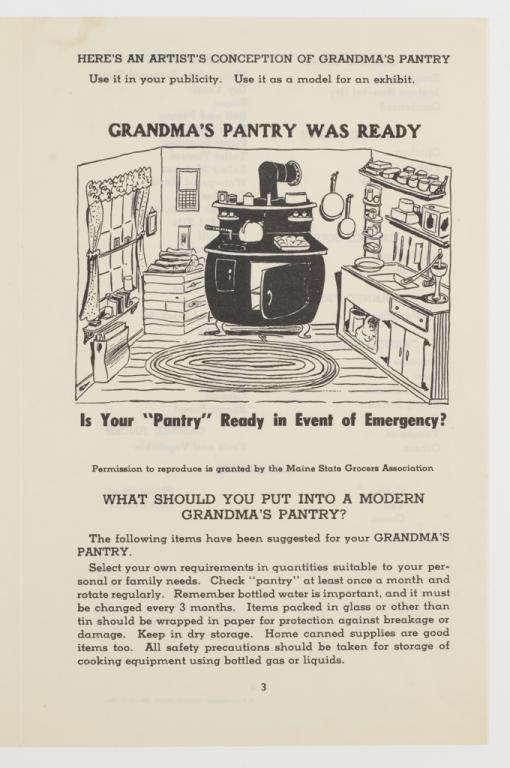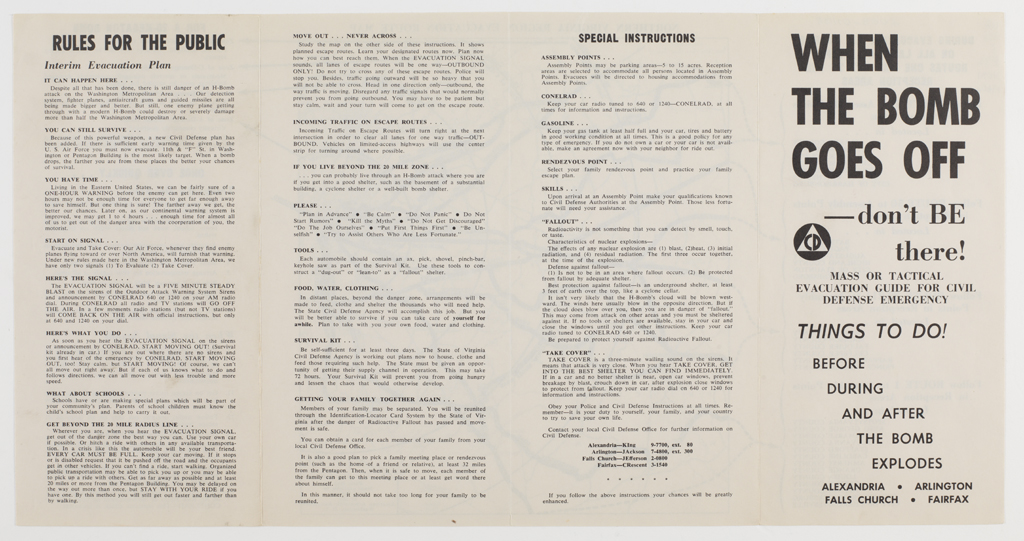Air raid drills. Conelrad. Bomb shelters. Duck and cover. All of these were familiar terms to Americans in the Cold War culture of the 1950s. The future looked uncertain in the new Atomic Age, and there was growing tension between America and the Soviet Union. People lived with the threat of nuclear war as part of their daily lives.
President Harry Truman established the Federal Civil Defense Administration (FCDA) in 1950 after the outbreak of the Korean War. As part of the Alert America campaign, the FCDA flooded the public with some 400 million pieces of survival literature that attempted to educate and reassure people that simple civil defense procedures would protect them from a nuclear attack. People received maps showing evacuation routes, families were encouraged to build their own bomb shelters, and countless schoolchildren watched the movie “Duck and Cover” and practiced hiding under their desks when they “see the flash.”
After the Cold War, the government focus shifted away from defense against Soviet air strikes. The civil defense programs were replaced by the Federal Emergency Management Agency (FEMA), which was created in 1978 to oversee civil defense and disaster management.




